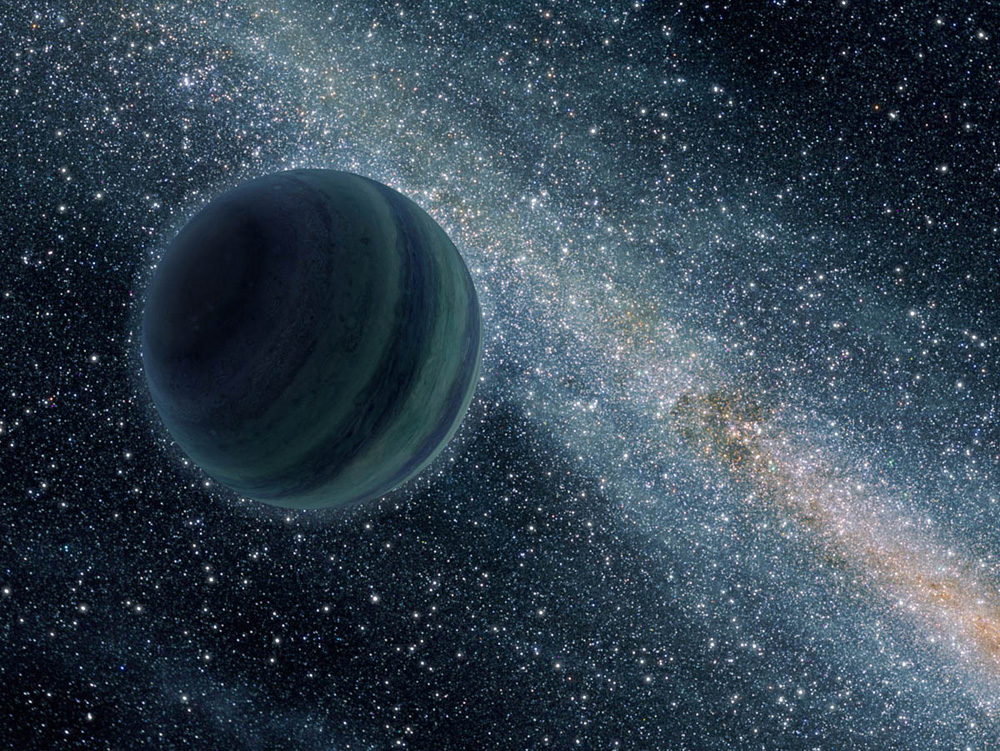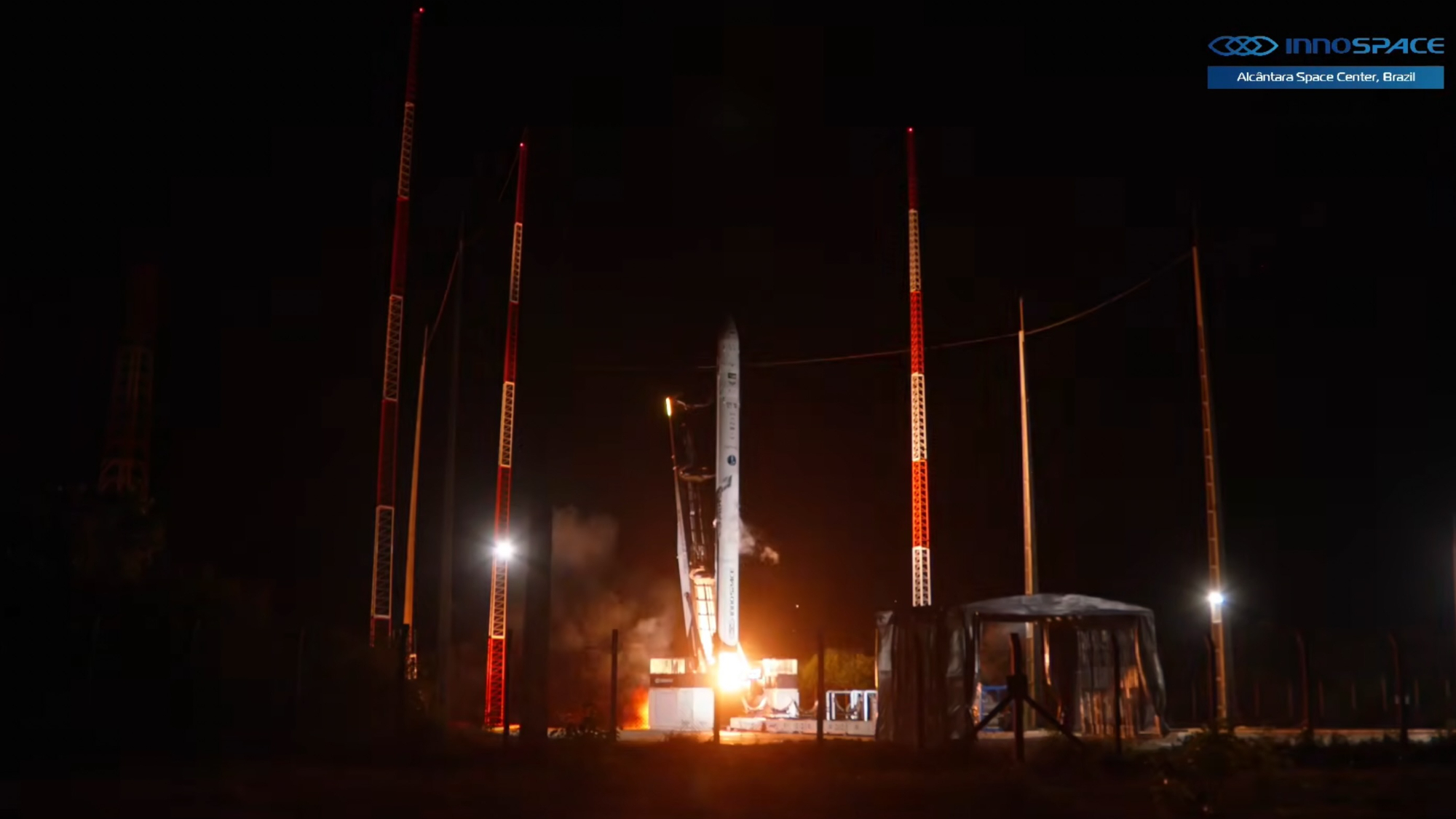Lonely Rogue Worlds Surprisingly Outnumber Planets with Suns

Astronomers have discovered a whole new class of alien planet: a vast population of Jupiter-mass worlds that float through space without any discernible host star, a new study finds.
While some of these exoplanets could potentially be orbiting a star from very far away, the majority of them most likely have no parent star at all, scientists say.
And these strange worlds aren't mere statistical anomalies. They likely outnumber "normal" alien planets with obvious parent stars by at least 50 percent, and they're nearly twice as common in our galaxy as main-sequence stars, according to the new study. [Photos: The Strangest Alien Planets]
Astronomers have long predicted the existence of free-flying "rogue alien planets." But their apparent huge numbers may surprise many researchers, and could force some to rethink how the planets came to be.
"Previous observations of bound planets tell us only about planets which are surviving in orbits now," said study lead author Takahiro Sumi, of Osaka University in Japan. "However, [these] findings inform us how many planets have formed and scattered out."
Alien worlds under gravitational lens
Sumi and his colleagues made the find using a method called gravitational microlensing, which watches what happens when a massive object passes in front of a star from our perspective on Earth. The nearby object bends and magnifies the light from the distant star, acting like a lens.
This produces a "light curve" — a brightening and fading of the faraway star's light over time — whose characteristics tell astronomers a lot about the foreground object's size. In many cases, this nearby body is a star; if it has any orbiting planets, these can generate secondary light curves, alerting researchers to their presence.
Breaking space news, the latest updates on rocket launches, skywatching events and more!
Before the current study, astronomers had used the gravitational microlensing technique to discover a dozen or so of the nearly 550 known alien planets. (NASA's Kepler mission has detected 1,235 candidate planets by a different method, but they still need to be confirmed by follow-up observations.)
Sumi and his team looked at two years' worth of data from a telescope in New Zealand, which was monitoring 50 million Milky Way stars for microlensing events. They identified 474 such events, including 10 that lasted less than two days.
The short duration of these 10 events indicated that the foreground object in each case was not a star but a planet roughly the mass of Jupiter. And the signals from their parent stars were nowhere to be found.
Independent observations from a telescope in Chile backed up the finds. Either these 10 planets orbit very far from their host stars — more than 10 times the Earth-sun distance — or they have no host stars at all, researchers said. [Infographic: A Sky Full of Alien Planets]
Common throughout the galaxy
Gravitational microlensing events are rare, because they require the precise alignment of a background star, a massive foreground object and Earth. So the discovery of 10 short-duration events in two years suggests a huge population of these unbound or distantly orbiting Jupiter-mass exoplanets throughout the galaxy, researchers said.
Sumi and his team calculated, in fact, that these planets are probably almost twice as common in our own Milky Way as main-sequence stars. And they likely outnumber "normal" planets with known host stars by more than 50 percent.
Other studies have established that it's probably pretty rare for huge planets to orbit more than 10 Earth-sun distances from a parent star. So the research team argues that most of the Jupiter-mass planets — at least 75 percent of them — are likely true "rogues," floating through space unbound to a star.
Theory predicts that such rogues should exist throughout the galaxy, and other researchers have found evidence of unbound objects that may indeed be orphan planets. But those worlds were much bigger, from three to 10 times Jupiter's mass, and there's a lot of uncertainty in the measurements.
Many of the previously detected objects could actually be "failed stars" known as brown dwarfs, Sumi said.
Sumi and his colleagues report their results in the May 19 issue of the journal Nature.
Rethinking planetary formation theories
The newly discovered rogue planets may have formed close to a host star, then been ejected from their solar systems by the gravitational influence of a huge neighbor planet, researchers said. Indeed, such planet-planet interactions are thought to be responsible for the odd, extremely close-in orbits of the giant alien planets known as "hot Jupiters."
But the abundance of the seemingly starless worlds may force astronomers to rethink some of their ideas about planet formation, according to Sumi.
The "current most recognized planetary formation theory (core accretion model) cannot create so many giant planets," Sumi told SPACE.com in an email interview. "So we need a different theory to create [so] many giant planets, such [as the] gravitational instability model."
In the core accretion model, dust coalesces to form a solid core, which later accretes gas around it, creating a planet. The gravitational instability model invokes the rapid collapse of gas, with a core forming later due to sedimentation.
The new study should inspire much follow-up research. One of the next steps could involve training more instruments on the microlensing alien planets, further monitoring them for any signs of a parent star. Such work, which may take years, could eventually reveal how many of these worlds actually do have parent stars, and how many are true rogues.
"The implications of this discovery are profound," astronomer Joachim Wambsganss, of Heidelberg University, wrote in an accompanying essay in the journal Nature. "We have a first glimpse of a new population of planetary-mass objects in our galaxy. Now we need to explore their properties, distribution, dynamic states and history."
You can follow SPACE.com senior writer Mike Wall on Twitter: @michaeldwall. Follow SPACE.com for the latest in space science and exploration news on Twitter @Spacedotcom and on Facebook.

Michael Wall is a Senior Space Writer with Space.com and joined the team in 2010. He primarily covers exoplanets, spaceflight and military space, but has been known to dabble in the space art beat. His book about the search for alien life, "Out There," was published on Nov. 13, 2018. Before becoming a science writer, Michael worked as a herpetologist and wildlife biologist. He has a Ph.D. in evolutionary biology from the University of Sydney, Australia, a bachelor's degree from the University of Arizona, and a graduate certificate in science writing from the University of California, Santa Cruz. To find out what his latest project is, you can follow Michael on Twitter.
